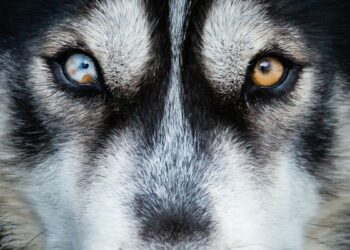As autumn and the holidays approach, dog owners must be aware of the dangers that can threaten their pet’s health. From toxic plants to poisonous seeds, there are many hazards that dogs can encounter. However, following some simple tips, you can keep your furry best friend safe and enjoy the fall season together.
1. Fallen leaves can develop potentially dangerous bacteria and mold, which can cause vomiting and diarrhea in dogs if ingested.
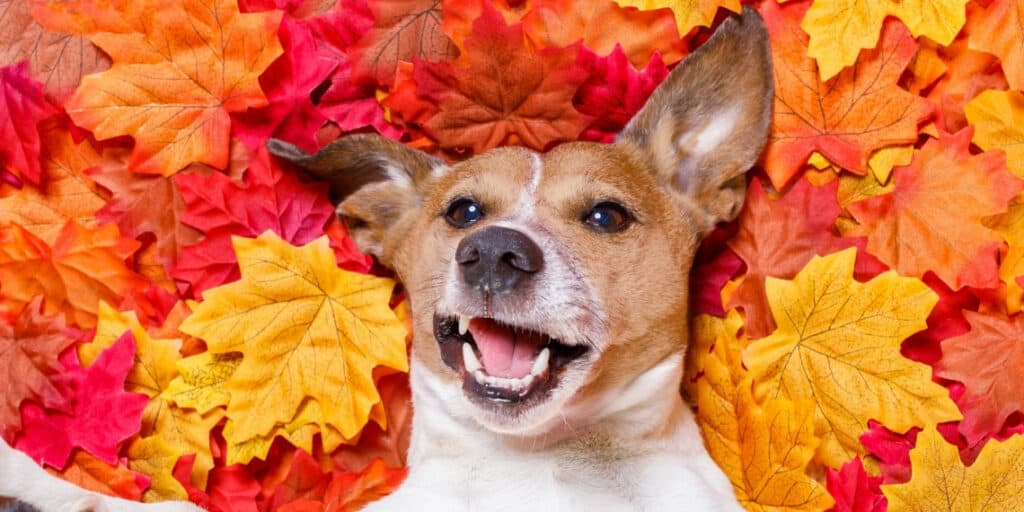
If your dog eats these, it will likely experience gastrointestinal problems. To avoid this, keep your dog on a leash during walks and ensure they don’t eat fallen leaves.
2. Many fruits that are safe for humans to eat, such as apples, pears, and cherries, can be dangerous for dogs.
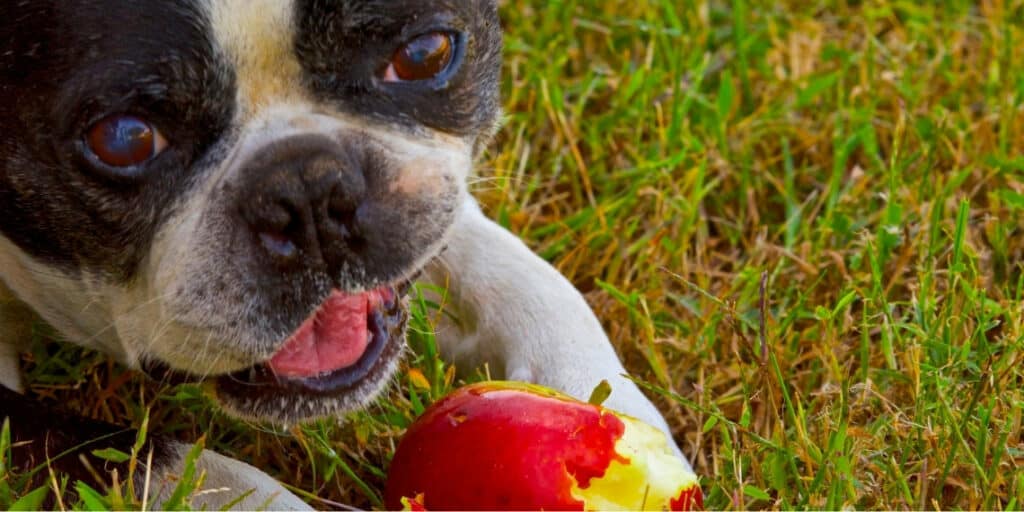
The seeds and pits of these fruits contain cyanide, poisonous to dogs. Therefore, if your dog eats fruit seeds or pits, it’s essential to seek professional medical help immediately.
3. If your dog has eaten a wild mushroom, take a photo or sample of the mushroom, and call your Vet.
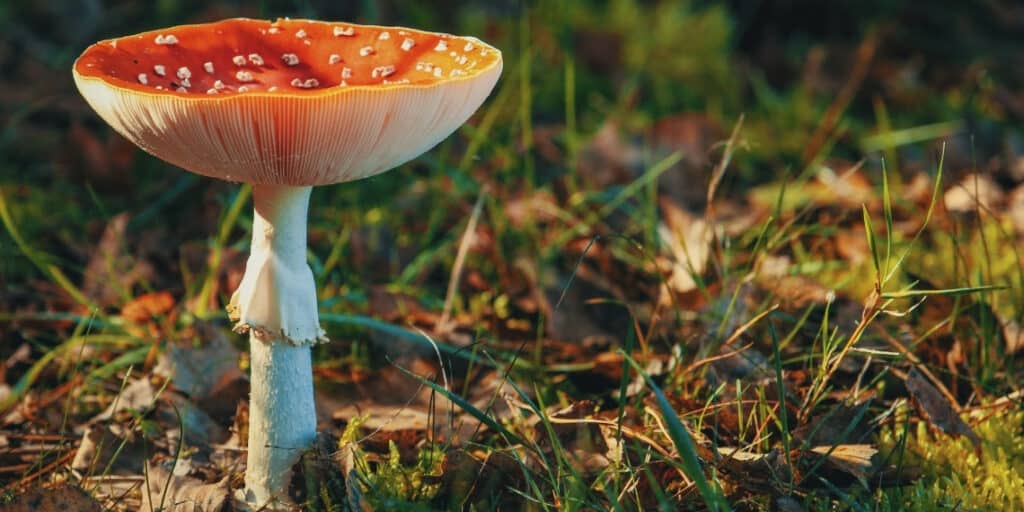
Keep an eye out for mushrooms sprouting up on your lawn, and keep your dogs away from them on walks or at the park.
While not all mushrooms are poisonous, it can be difficult to differentiate between safe and unsafe varieties. If you’re unsure whether a mushroom is safe for your dog, it’s best to avoid it altogether.
4. When walking this autumn, keep an eye out for oaks and acorns, and make sure your dog doesn’t eat any.
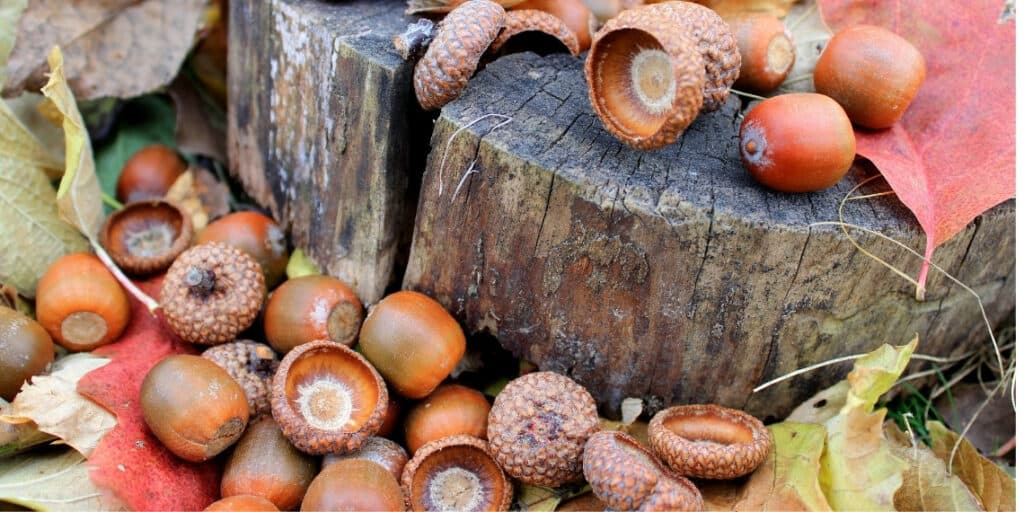
Dogs frequently come in contact with acorns during autumn and winter. Tannic acid, a dangerous ingredient found in these acorns, is thought to cause liver and kidney damage. Warning signs include vomiting, diarrhea, abdominal pain, and lethargy. Intestinal blockage can also occur from ingesting acorns. If your dog displays any of these symptoms, take them to the nearest clinic immediately for treatment.
5. The horse chestnut tree produces a conker fruit, which can be a huge problem for dogs.
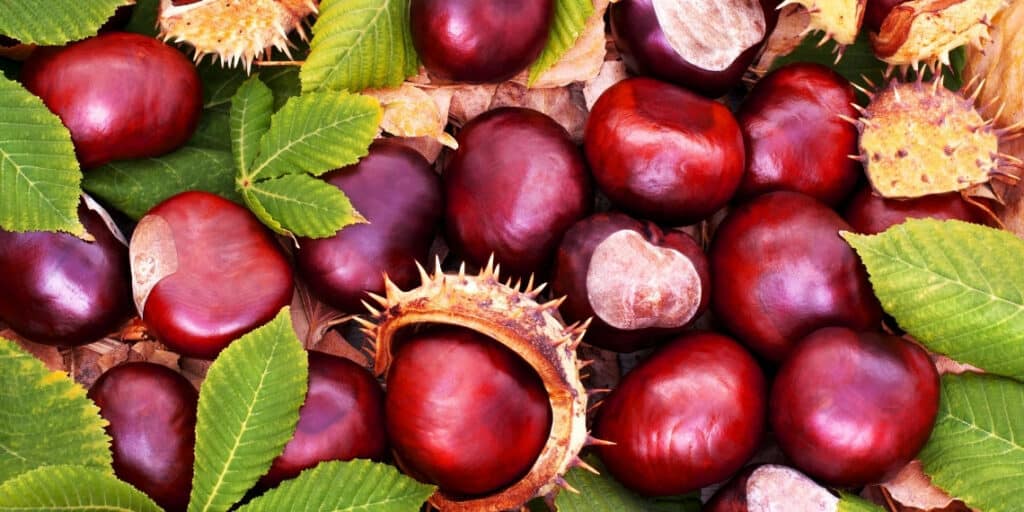
Conkers contains a toxin called aesculin which can make your dog sick or give them an upset stomach. If eaten in more significant amounts, aesculin can cause serious side effects; in rare cases, it can even be deadly. Symptoms can include vomiting, diarrhea, and convulsions. Conkers also represent a choking risk. If your dog has eaten a conker, seek professional medical help immediately.
6. Some fallen fruits and berries, too, could make your dog very ill.
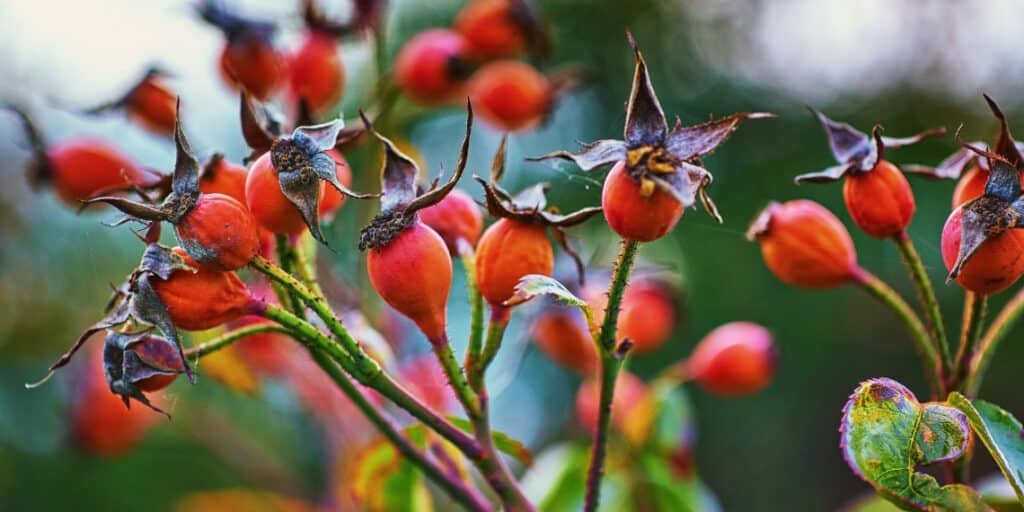
The most dangerous fruit-bearing plants for dogs are Deadly Nightshade, Cuckoo Pint, and mistletoe–all of which have brightly colored berries and are typically found in woodland areas. These fruits can make your dog unwell if they’ve begun to rot or ferment.
7. Many flowering bulbs are toxic for your pup.
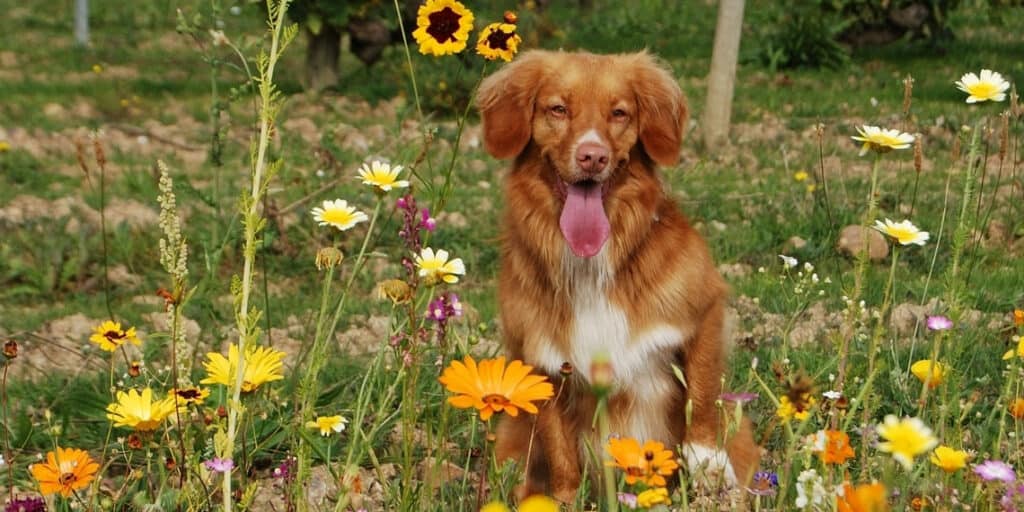
Daffodils and tulips are some of the worst offenders. In addition, Amarillys, hydrangeas, and autumn crocuses can be poisonous to your pet if they eat the bulbs. You may notice excessive drooling, vomiting, diarrhea, shakiness, breathing problems, lethargy, or seizures if your dog has been poisoned. If your dog shows any of these signs, take them to the Vet immediately.
8. Dogs can pick up a rare but deadly flesh-eating condition in muddy areas.
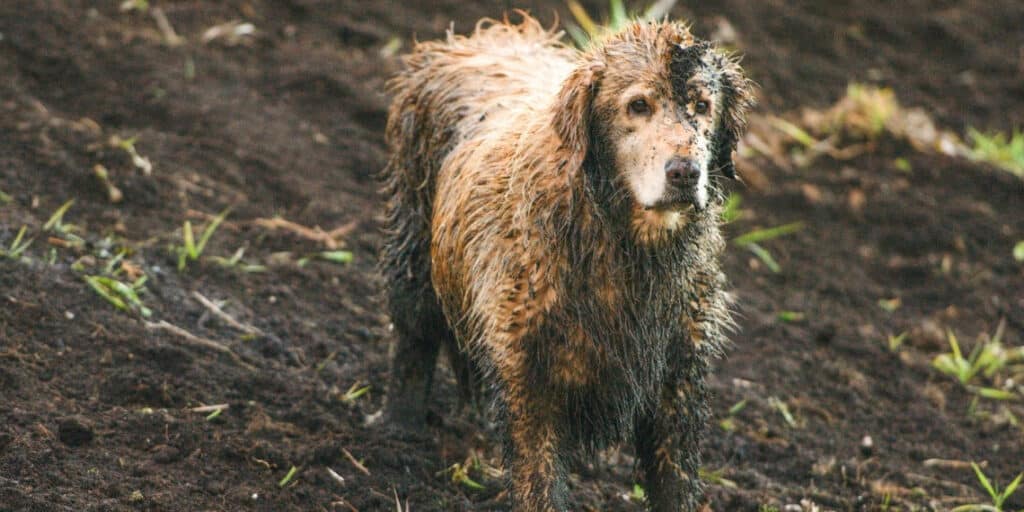
The disease is called Alabama Rot, and it’s fatal in 9 out of 10 cases. It affects blood vessels in the skin and kidneys, with initial signs including unexplained marks, sores, or ulcers – usually on a dog’s legs or paws. To prevent your dog from contracting the disease, experts recommend avoiding muddy areas or washing and drying them thoroughly after wet or muddy walks.
9. While your pets may be safer from ticks in the cooler autumn temps, flea season has just begun.
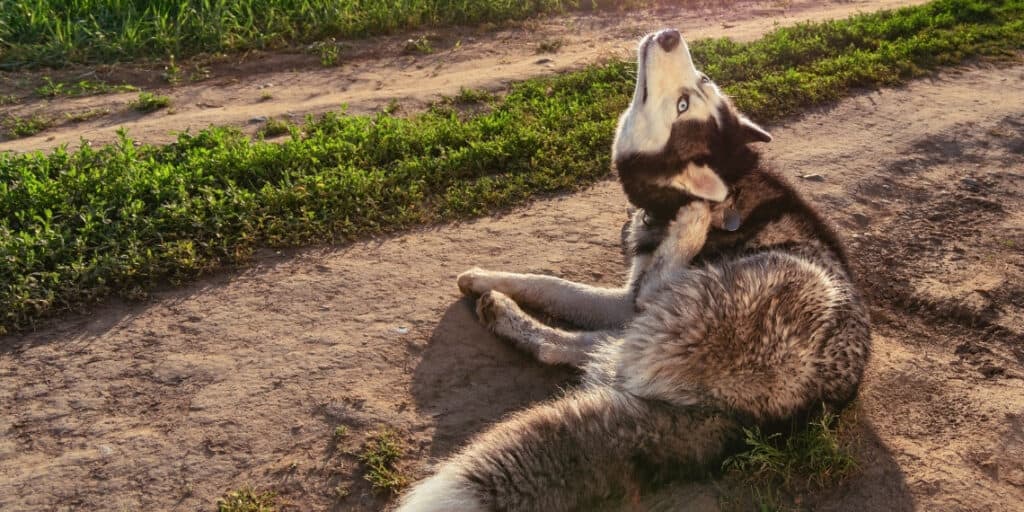
While both parasites are active all year, it’s critical to keep up with your pet’s flea and tick prevention program as directed by your veterinarian. A few of the wrong fleas or ticks can be catastrophic to your dog.
10. Chocolate sales rise around Halloween but remember it contains a stimulant called theobromine that’s poisonous to dogs.

The amount of theobromine in chocolate varies by type, with dark chocolate having the most. Theobromine mainly affects the heart, central nervous system, and kidneys. Following ingestion, signs may appear 4-24 hours later, including vomiting, diarrhea, restlessness, hyperactivity, rapid breathing, muscular tension, incoordination, an elevated heart rate, and seizures.
11. Stashing your Halloween candy far away from your pets is always best.
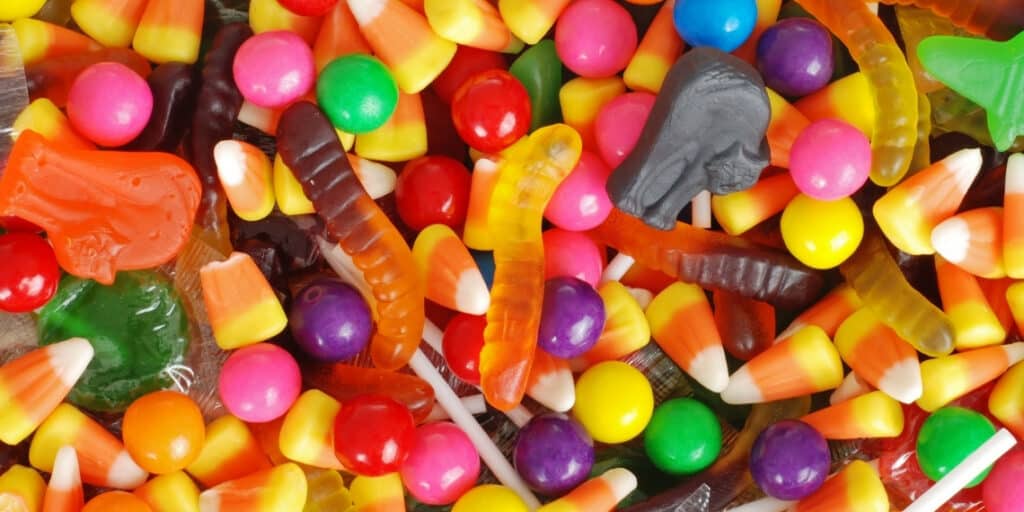
Sugar is no better for your dogs than it is for us. Additionally, chocolate can be toxic and even fatal for dogs. Xylitol (an artificial sweetener found in most Halloween candies and some peanut butter) can be deadly for dogs – even in minimal amounts.
12. If you enjoy decorating your home for the holidays, keep festive items out of reach.
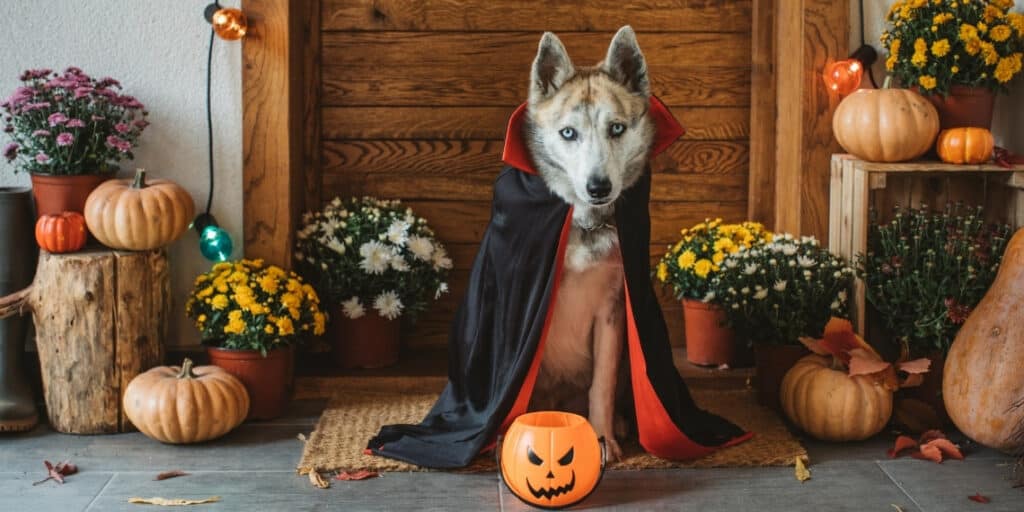
Autumn decorations, such as Jack-o’-lanterns, wreaths, and candy bowls, are pleasing to humans but can pose a danger to your pet. Ensure that choking hazards, electric lights, and small parts are kept away from your puppies to avoid an unplanned visit to the Vet.
13. Antifreeze is used to keep cars running smoothly during the colder season, but it is dangerous to pets.
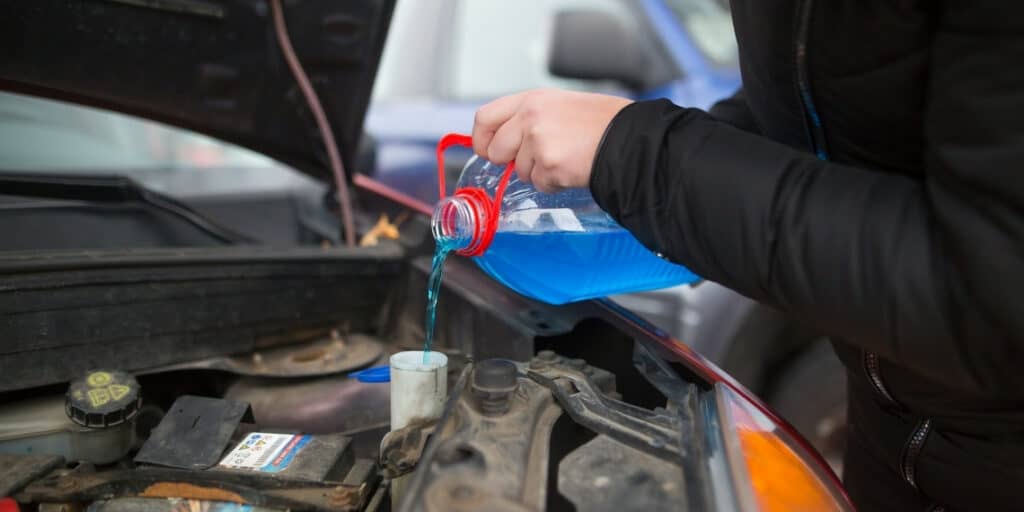
Unfortunately, while antifreeze and coolants help protect your vehicles and appliances from cold weather during autumn, the ethylene glycol they contain is dangerous for pets. These products’ sweet smell and taste make them irresistible to animals, but even a small quantity can cause severe kidney damage or be fatal.
The first indication of intoxication in dogs is that they appear “intoxicated.” Contact your veterinarian immediately if you suspect your dog has ingested ethylene glycol or have any concerns. Unfortunately, the prognosis for recovery gets worse with time as the longer it takes to administer treatment.
14. Keep all holiday plants far out of your dogs’ reach.

Popular Christmas and holiday plants like chrysanthemums, poinsettias, holly, and mistletoe can make pets sick, and lilies can cause sudden kidney failure.









